The types of apparel fabric serve as the foundation of the global fashion business. The process begins with the selection of fabric, which determines the feel and drape of the garment as well as comfort and durability. For this reason, fashion brands pay a lot of attention to the types of apparel fabric they select. There is a new trend for 2025; now the focus is on sustainability, performance, and style. Selecting popular types of apparel fabric now is not only wise, it is critical. If you are in the process of launching a new collection or rethinking your stock, knowing the most sought after materials of the season gives you an advantage
Table of contents
- The Importance of Types of Apparel Fabric for Success
- Cotton: The Evergreen King In Types of Apparel Fabric
- Linen: Wonder of Nature Types of Apparel Fabric In One Place
- Polyester: Types of Apparel Fabric’s Modern Workhorse
- An Overview on Nylon’s Characteristics In Fabrics Used For Apparel
- Rayon: Affordable Luxury in Types of Apparel Fabric
- Wool: A Classic Insulator of Apparel Fabric
- Silk: A Fabrice Mark of Luxury
- Denim: Ever-Evolving Classic in Types of Apparel Fabric
- Spandex: The Stretch Essential in Type of Apparel Fabric
- Coronet: Exquisite Velvet Fabric and Its Uses in Clothing
- Cotton Twill: Exquisite Twill Fabric and Its Use For Various Garments
- Chambray: Light and Stylish in Types of Apparel Fabric
- Satin: Glossy Glamour in Types of Apparel Fabric
- Fleece: Warmth Meets Comfort in Kinds of Garment Fabrics
- Chiffon: Featherlight Elegance in Kinds of Garment Fabrics
- Hemp: The Eco Powerhouse in Types of Apparel Fabric
- Leather: Timeless Edge in Types of Apparel Fabric
- Canvas: Rugged Utility in Types of Apparel Fabric
- Seersucker: Textured Freshness in Types of Apparel Fabric
- Conclusion: Adapt the Best Types of Apparel Fabric for Success with the Right Strategies
- FAQs
The Importance of Types of Apparel Fabric for Success
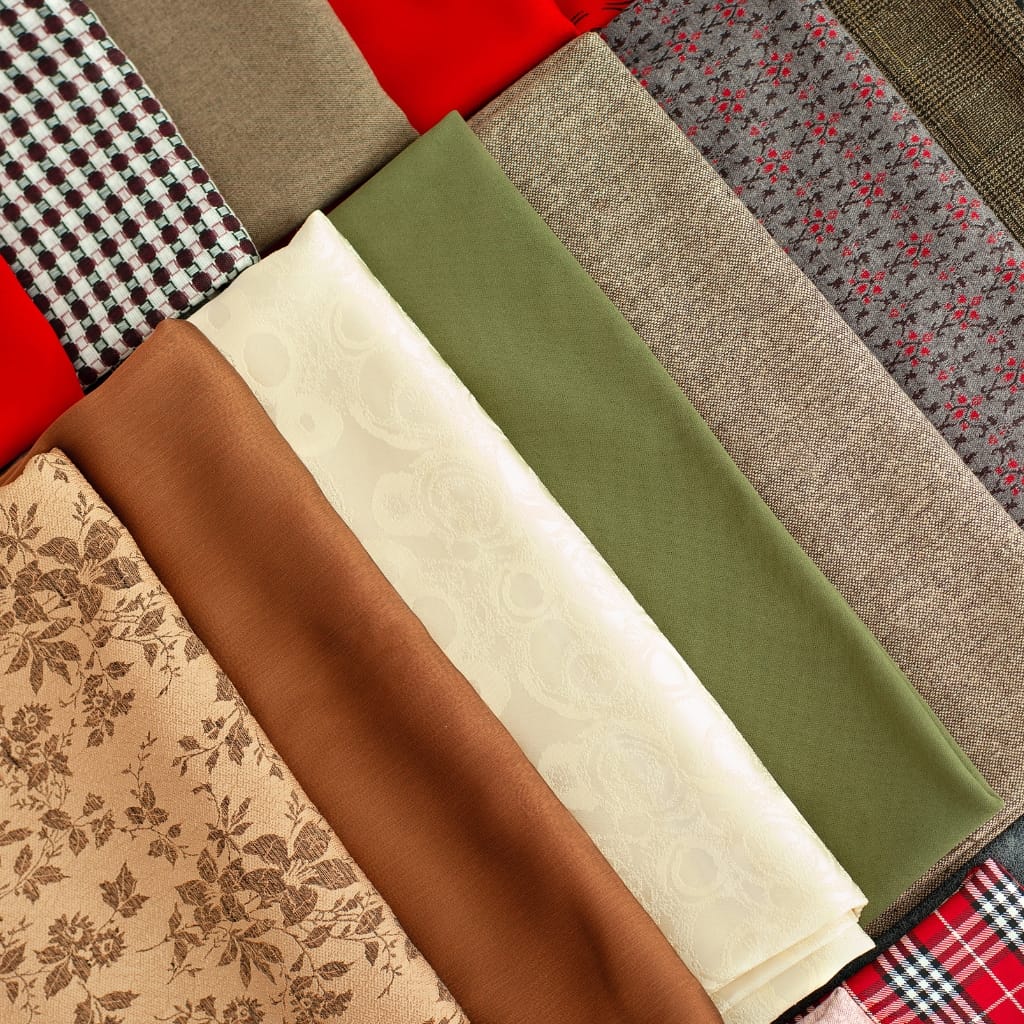
Deciding which types of apparel fabric to use can build a fashion brand or destroy it. With the available options, understanding the benefits of each fabric helps plan your collections. Moreover, it helps improve quality while reducing expenditures. Fashion brands that overlook the importance of fabric selection usually lag behind. This is because fabric is one of the most important components that affects user experience in terms of comfort as well as style – how they feel and interact with the clothing. Moreover, many fabrics provide performance features that enhance their functionality. With knowledge of the types of apparel fabric, you can address both fashion and utility.
Cotton: The Evergreen King In Types of Apparel Fabric
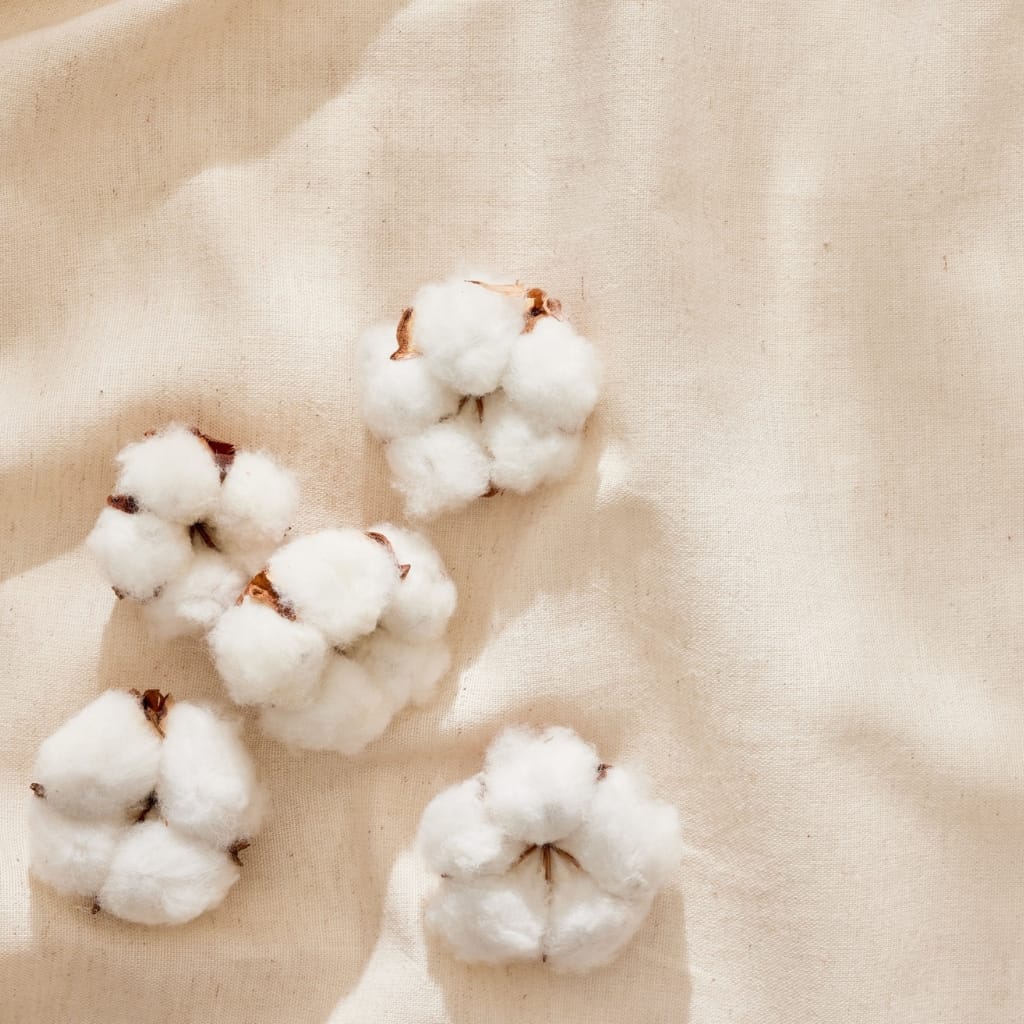
Out of the numerous types of apparel fabric, cotton stands out as the most liked and used in the world. It’s due to its breathability and unparalleled comfort. Cotton, alongside being a natural fiber, is loved by fashion designers from all accross the globe due to its unmatched ability to blend with different fibers and superb dye retention. Eversal, from basic T-shirts to luxury garments, cotton has an evertype of use. Recently, organic cotton is becoming a trend because companies are focusing on sustainability. Hence, using sustainable organic cotton shows that even the most traditional types of apparel fabric can shift with consumer demand. With everchanging trends towards eco friendly options, cotton is still a goes to fabric.
Linen: Wonder of Nature Types of Apparel Fabric In One Place
Apparel fabric trends feature linen in one of the prominent places. Unlike most types of apparel linen is made from the flax plants, it has a light, crisp feel which is ideal for warm weather. Summer collections benefit from its breathability and moisture-wicking features. In addition, linen is eco-friendly because it is biodegradable, which makes it appealing to fashion brands striving for sustainability. Designers love linen due to its unique texture which makes garments more interesting. While some people think that its tendency to wrinkle easily makes it less attractive, many view the wrinkles as beauty marks. Thus, temperamental beauty and performance lend sewing enthusiasts to consider linen as fabric of choice lending it top spot among other natural types of apparel fabric.
Polyester: Types of Apparel Fabric’s Modern Workhorse
The reason polyester is number one among synthetic types of apparel fabric is because of its durability, price, and versatility. This synthetic material is a staple of many apparel lines because it is wrinkle free, fade free and shrinking free. It is used in sportswear, casual clothing, and even formal wear. In addition, it combines easily with natural fibers such as cotton and wool, making them more durable and elastic. One clear advantage of polyester is speedy active wear which dries quickly. Recycled polyester has given this fabric new life in sustainable fashion. Therefore, it is clear that polyester is still a must have in modern fashion and forward collections.
An Overview on Nylon’s Characteristics In Fabrics Used For Apparel
Nylon is an amazing and flexible type of apparel fabric because of how strong it is. Originally developed to replace silk, nylon is now found in everything from intimate wear to outerwear. Its lightweight, moisture-wicking, and abrasion-resistant properties make it ideal for performance wear. Fashion brands incorporate nylon into accessories such as bags and shoes. Compared to some other fabrics, nylon retains its shape and color better. It also easily blends with spandex and polyester, furthering the functionality of multi-fiber garments. Thus, new innovations and advancements in technology will always make nylon indispensable in modern fashion design.
Rayon: Affordable Luxury in Types of Apparel Fabric
Apparel fabric types include rayon, a semi-synthetic fiber that feels luxurious yet is considerably cheaper. Affordability does not take away from its elegance as rayon mimics the softness and sheen of silk. In addition, rayon has a great ability to breathe, drape, and absorb dyes, giving vibrant colors. Fashion brands are known to favor it due to its ability to bridge the gap between natural and synthetic materials. Though, requires careful laundering due to its weak nature when wet. Rayon continues to grow on demand as consumers strive for comfort and elegance without breaking the bank. Thus, remains a top material in contemporary fashion.
Wool: A Classic Insulator of Apparel Fabric

Wool stands as a classic choice in types of apparel fabric, especially during the colder seasons. The material insulates well, allows breathing, and can withstand moisture. Wool comes from sheep and includes merino, cashmere, and alpaca. High-end brands depend on wool for suits, coats, and knitwear. It’s superior for winter collections since it can retain heat while enabling ventilation. Properly cared for, wool garments will last years. Sustainable farming practices have also enhanced its appeal in eco-conscious fashion. Therefore, wool continues to dominate the market as a premium and dependable apparel fabric.
Silk: A Fabrice Mark of Luxury
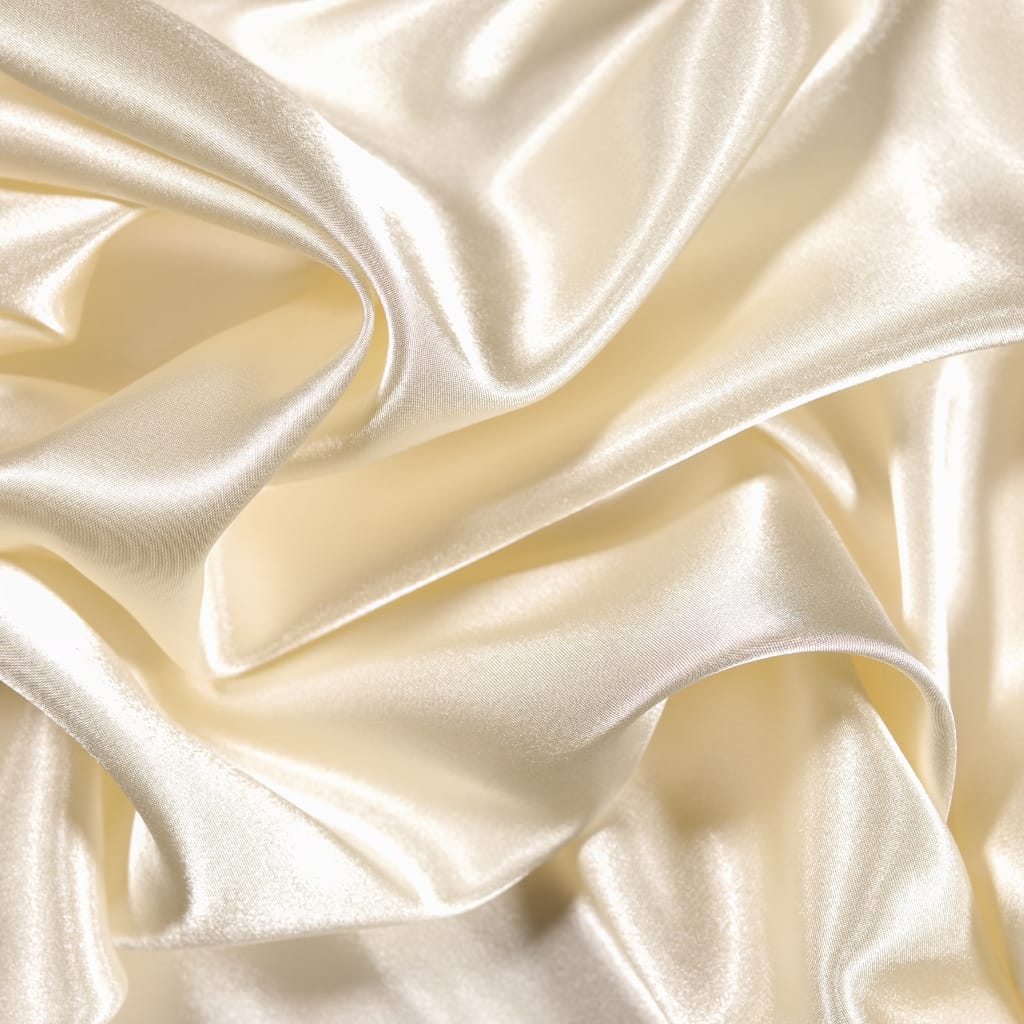
Unlike other types of apparel fabric, silk stands rampant for its refinement. Silk is produced from the cocoons of silk worms and is distinguished by its glossy surface and soft feel. Silk has a silky smooth caress to it and regulates to the body’s temperature. Designers frequently recycle silk as one of the materials for evening gowns, lingerie, and upscale silk accessories. Moreover, silk’s inherent capability to absorb dyes adds to its beauty. Surpassing all fabrics in delicacy, silk is a mark of high fashion and sheer luxury. Many brands today have started adopting cruelty free alternatives to silk to align with ethical standards. After all, nothing says sophistication as silk does.
Denim: Ever-Evolving Classic in Types of Apparel Fabric
Denim continues to be one of the leading types of apparel fabric because of its classic nature and robust endurance. Initially designed as workwear, denim has become a staple of casual attire worldwide. It is constructed of cotton twill and becomes stronger and coarser through different washing and finishing processes. Brands utilize denim for an array of products including jeans, jackets, and skirts. Developments such as stretch and organic denim ensure its continued appeal. Of late, recycled denim has gained popularity as a result of increased focus on sustainability. From high fashion to streetwear, denim is omnipresent and adapts effortlessly, proving its place as a lasting and evolving material in fashion design.
Spandex: The Stretch Essential in Type of Apparel Fabric
In terms of fabric type, spandex, also known as elastane or Lycra, reigns supreme as the stretch fabric all types of apparel requires. Spandex infuses flexibility, shape retention, and range of movement to any garment. Although rarely used on its own, spandex is often blended with other fibers. Such attributes render it indispensable in activewear, swimwear, and nearly-skin-tight silhouettes. The ability to snap back into shape ensures optimal fit and garment longevity. Moreover, form-fitting fashion relies on spandex to enhance comfort without compromising design. It is essential in today’s functional and fashion-forward apparel.
Coronet: Exquisite Velvet Fabric and Its Uses in Clothing
Because of its soft pile, velvet stands out among the rest of the listed fabrics and apparel. Designers use velvet in suits, evening gowns, and other accessories due to its rich texture and visual depth. Modern velvet has also learned to incorporate cotton, polyester, and blends along with its traditional silk. Velvet has always been and will continue being seasonal from Fall, Winter, and festive seasons. Due to its relation with luxury, it magnificently enhances any collection and therefore remains prominent in both modern and sophisticated collections.
Cotton Twill: Exquisite Twill Fabric and Its Use For Various Garments
Twill secures its foothold in the fibers and apparel fabrics due to providing structure and longevity. Unlike the majority of the listed fabrics and apparel, Twill does stand out due to its unique diagonal weave. It is highly durable and non wrinkle-able, hence why fashion brands love working with it. Twill is a favorite to be used in sharp looking jackets, trousers and working uniforms because of it’s strength. Unlike other types of weaves, cotton twill drives in breathability and maintenance making it an ideal compression for use in everyday clothes. It also serves utility metatility, therefore, preferred in many markets.
Chambray: Light and Stylish in Types of Apparel Fabric
With its denim-style look, chambray is a type of woven fabric, distinctively prized for ease and breathability. Navarro & Carrick’s (2015) describes chambray as ‘located at an intersection denim and cotton’, which indicates the soft feelings associated with chambray and its light and breathable texture. It has a blue color like denim but is much lighter with more breathable woven fabric compared to denim twills. Its popularity stems from its application in shirts, summer dresses and casual tops. Designed for warm climates, its comfort and versatility make it an all time favorite for summer lines. Additionally, chambray brings a relaxed elegant vibe to any outfit. Effervescent designers across the globe still prefer chambray because it brings together the feeling of linen and the look of denim, further evidencing that its charm is unmatched.
Satin: Glossy Glamour in Types of Apparel Fabric
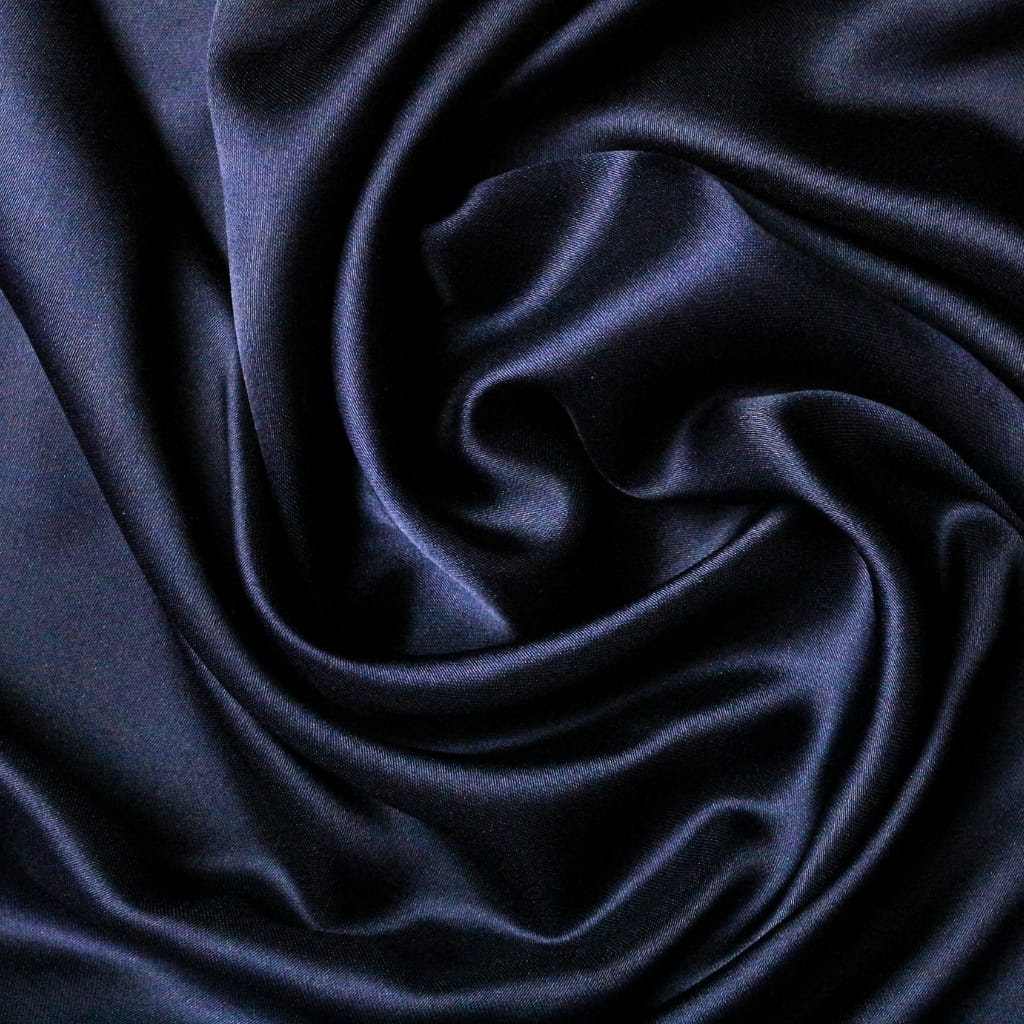
Having a smooth surface and luxurious drape, satin enhances the elegance of clothing fabric by promoting high luster to the fabric. Navarro & Carrick (2015) explains that satin is traditionally made with silk, but nowadays, they more often utilize polyester or acetate. Satin is also very popular for lingerie and accessories designers that require dressy designs. It exclusively deals with formal gowns, event fashion wear, and slinks underwear modeling because under lighting satin always shimmers. Moreover, satin’s flowing property amplifies feminine curves of the frame while striving to design and sash the work. To create unique designs, during the design process many designers rely on smoothing them with satin. Thus, it’s not uncommon to spot satin being used in most seasons of fashion, strutting glamour into their collections freely and without restrictions.
Fleece: Warmth Meets Comfort in Kinds of Garment Fabrics
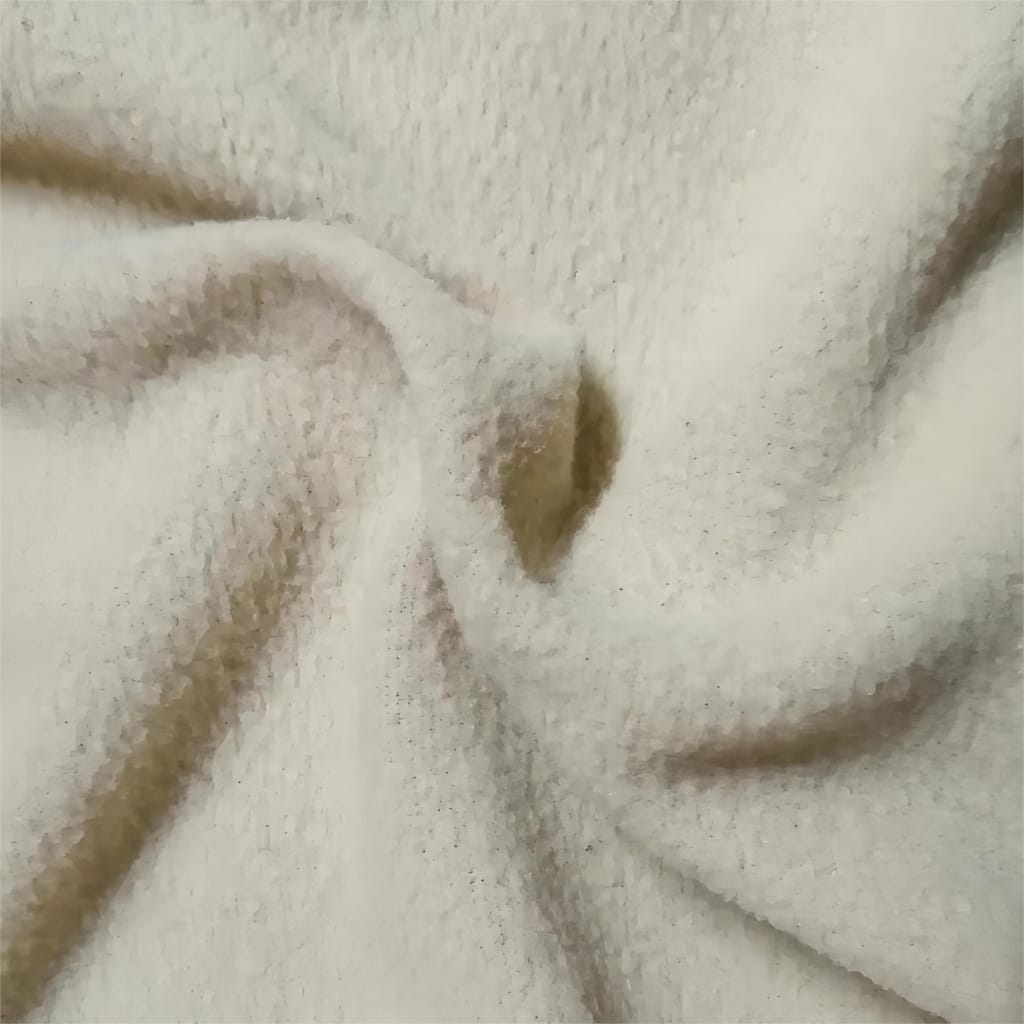
It’s difficult to find a more comfortable fabric than fleece for the colder regions. It is usually made of polyester, which is a very light fabric in comparison to its insulative properties. That is why most brands manufacture fleece jackets, hoodies and loungewear. Fleece is soft and warm yet not heavy. There are also recycled fleece options that are appropriate for eco fashions. Because fleece repels moisture and dries quickly, it can be used for active and outdoor clothing. Thus, fleece performs remarkably well in both lifestyle and performance fashion markets.
Chiffon: Featherlight Elegance in Kinds of Garment Fabrics
Chiffon has a transparent, gossamer quality that flows beautifully, so it earns its own place amid the types of chiffon fabric. This is made of silg, nylon, or polyester and it makes the look more flattering and adds a touch of romance. Brand also depict it in gowns, overlays, and blouses because of its fluid movement. It is soft, but chiffon can be layered without losing its grace, adding chicness instead. Chiffon is also extremely photogenic, so it is greatly adored by bridal and runway collections. Therefore, chiffon remains dominant in the surrealistic elegant fashion piece.
Hemp: The Eco Powerhouse in Types of Apparel Fabric
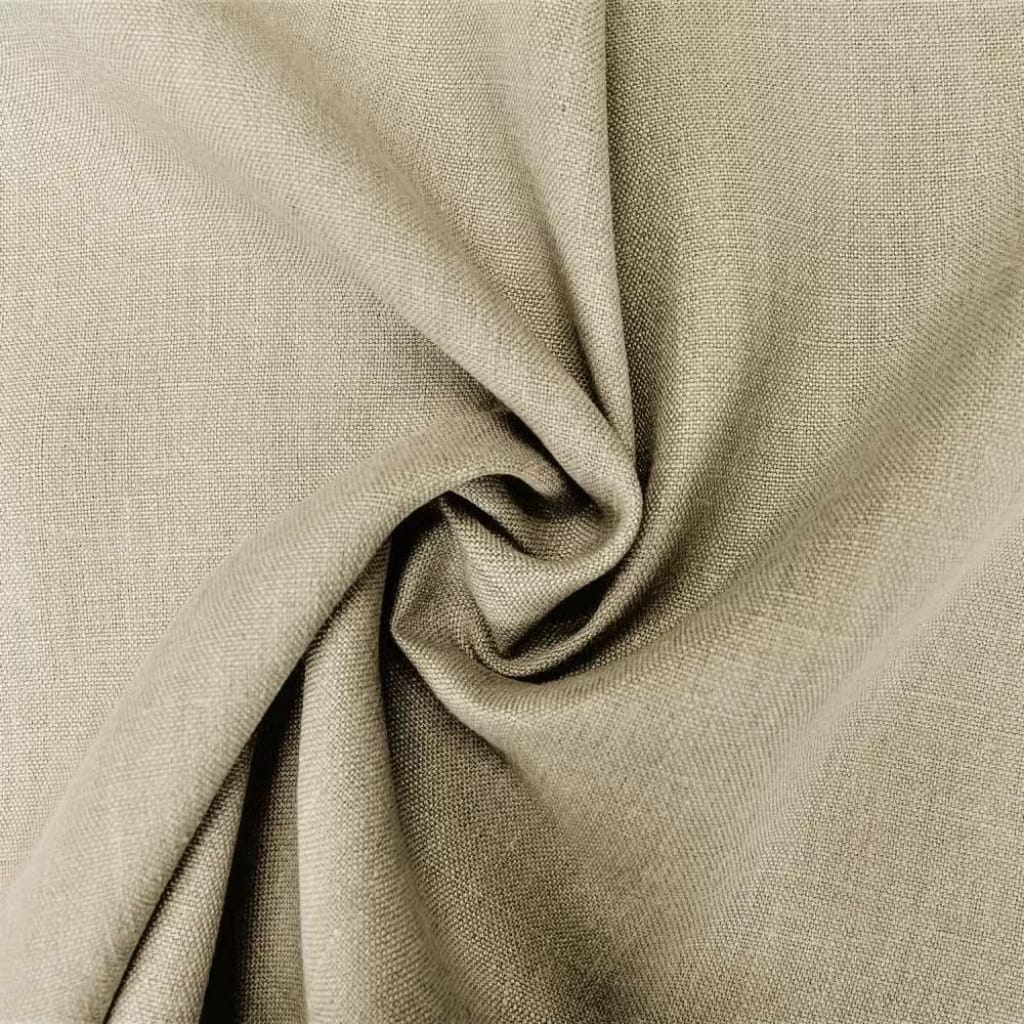
Hemp hemp fabric is hte “sustainable star” as it “grows quickly, needs little water, and resists pests.” It is also a naturals antimicrobial and, moreover, is strong and breathable. Green brands selling casualwear and accessories are begining to adopt hemp clothing. Fashion brands commited to sustainability are now adopting hemp for casualwear and accessories. In addition, it softens over time, making it better with age. Combining performance and sustainability makes hemp a pioneer for eco-conscious innovation. It also redefines what future-friendly fabrics should look like.
Leather: Timeless Edge in Types of Apparel Fabric
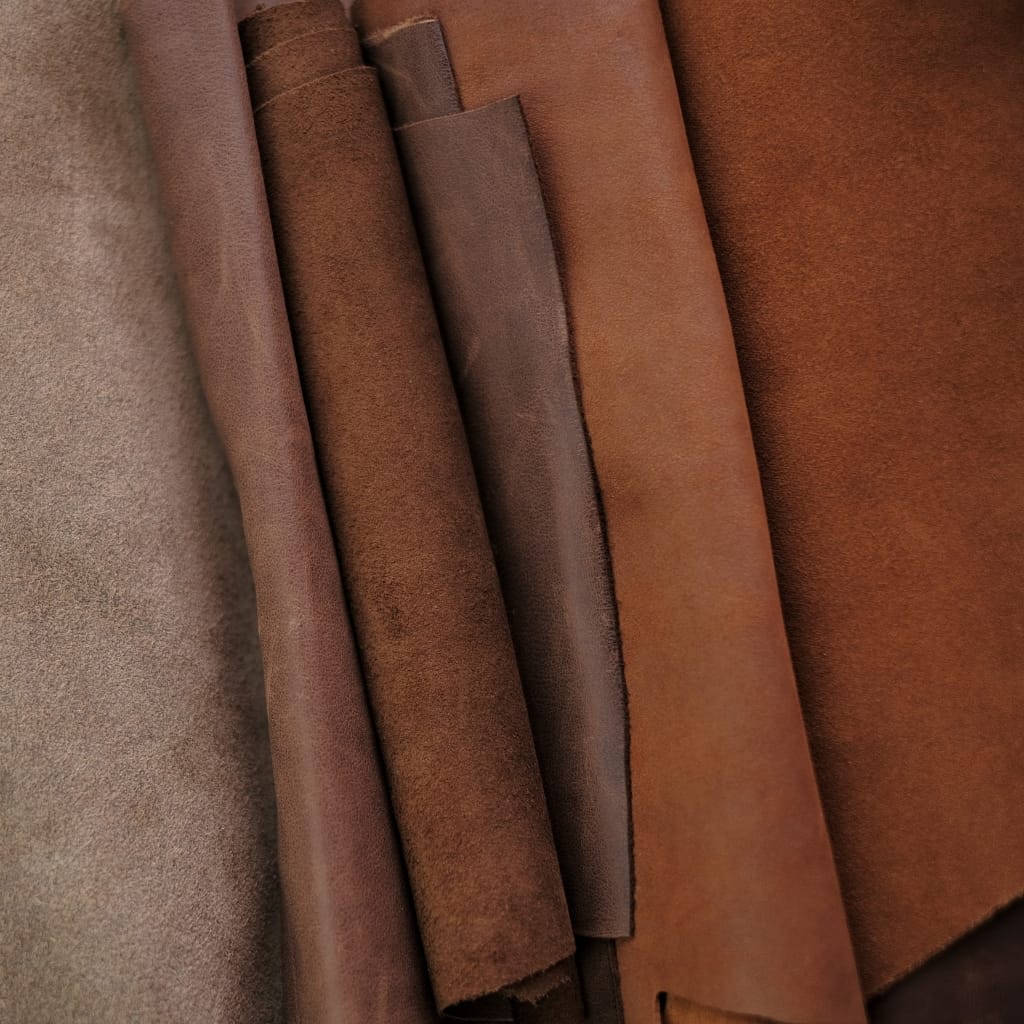
These two words summarize types of apparel fabric: rough and refined like leather. Leather is crafted from animal hides (or vegan options) and offers both durability and visual impact. Jackets, pants, bags and shoes are made with it to give an attitude and luxury touch to any collection. Leather tells a story with its marks. Faux leather and plant based alternatives also appeal to ethical consumers.
Leather remains a staple in edgy and premium fashion lines.
Canvas: Rugged Utility in Types of Apparel Fabric
Canvas has an important position in types of apparel fabric due to its known strength and durability. It fits best in workwear and utility fashion because manufacturers weave it from cotton or linen. It provides structure while maintaining breathability Additionally, it withstands strong use and harsh conditions. Because of it’s evolving style, canvas fits both classic and modern collections. This makes it ideal for construction and practical fashion design.
Seersucker: Textured Freshness in Types of Apparel Fabric
Seersucker also stands out in types of apparel fabric as it features a puckered light weight texture. Traditionally, Seersucker is made from cotton allowing airflow and stopping cling. Southern and resort styled collections tend to use seersucker the most because of it’s unique look. Designers apply this on summer suits, dresses, and shorts. It also requires very little iron and adds extra texture to designs making it perfect for brisk yet polished summer fashion.
Conclusion: Adapt the Best Types of Apparel Fabric for Success with the Right Strategies
It is clear that the fabric used for an article of clothing changes and progresses, just like fashion as a whole. In order to develop customer satisfaction and retention, brands must pay close attention to bestseller evergreen fabrics. Supplied fabric for bridges luxury label, streetwear, or ecology oriented collection should meet clients expectations as set requirements. All major cutting edge companies understand that working with high quality fabrics is a basis for achieving elegance. Feel free to spend resources on new fads, turn older materials into something new and lead the fashion conscious trends. The right choice of apparel fabric inherent to them enables brands produce their clients clothes and collections that are appealing, durable and comfortable at the same time.
FAQs
Fashion brands commonly use cotton, polyester, linen, rayon, silk, wool, and denim. These types of apparel fabric offer comfort, durability, and style for a wide range of garments.
Fashion brands love natural types of apparel fabric like cotton and linen because they are breathable, soft, and sustainable. These fabrics offer comfort and eco-friendly appeal, which align with consumer demand.
Polyester, nylon, and spandex are leading synthetic types of apparel fabric. These materials provide strength, stretch, and moisture resistance, making them ideal for activewear and high-performance clothing.

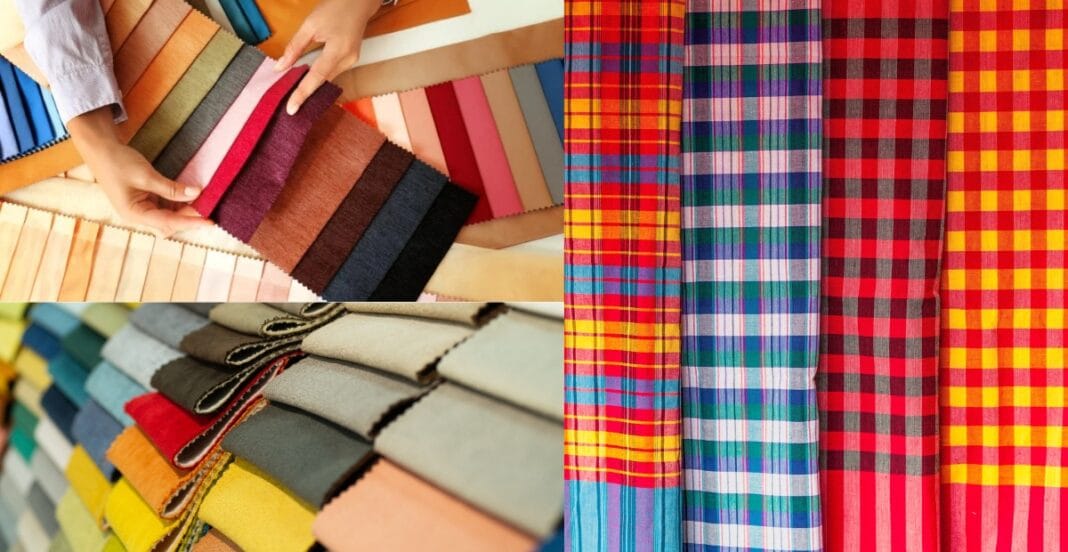

The way fabric trends are shifting toward sustainability is definitely reshaping how brands source and design. I’d love to see more insights on how these trends vary across global markets or apparel categories.